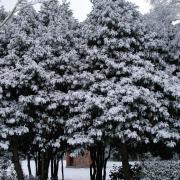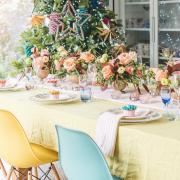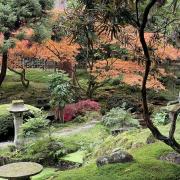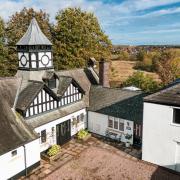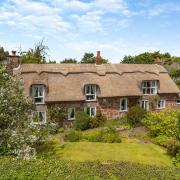When Rozy and Philip Barnes decided to move from The Old Rectory in Brereton a few years ago, they were not only looking for a new home but also a piece of land on which they could create a new garden from a blank canvas. While many people might prioritise finding a suitable property, the couple focused on land that had the potential to build both their dream home and an exceptional garden. After a challenging search, they eventually found their ideal location down a quiet country lane in the heart of the Cheshire countryside, at Smallwood, near Sandbach.

Rozy has a long-established family background in gardening thanks to her mother, Jane Johnson, who won the Cheshire Farm Garden of the Year competition in 1996. With a Garden Design diploma from Reaseheath College and an RHS horticultural qualification of her own, it made perfect sense for Rozy to draw up the plans for the new garden herself. This meant the design for the garden could be explored simultaneously with the architectural plans for the house, and ensure the two worked together in harmony.

In 2021, work on building the house began. Trees were moved, and a nursery bed was created as a temporary home for some of the special plants and cuttings that had made the journey from the old garden. A large, mature acer was moved from the front of the house and is now a key feature in its new location.
Establishing the right views from different rooms in the house was key, and from the kitchen dining table, you look directly out over the secluded inner garden. And what a view it is. The structure is quite formal, and Rozy tells me she was inspired by the gardens at Arley Hall, which mix formality of design with layers of soft planting. A circular lawn is set into an outer square created by gravel pathways and Yorkstone Paving that serve to provide different routes around this part of the garden. But that's where the formality ends. The borders are deep and generous, packed with herbaceous perennials and grasses providing colour and interest throughout the seasons. The choice of planting is sublime, with a soft palette of blue, pink, and purple, and a gentle waftiness from the clouds of geranium and nepeta. Rozy wanted this part of the garden to make you feel you are 'nestled in with the plants,' and it does just that. Signature plants are repeated throughout, creating a stunningly beautiful display that subtly changes as the season progresses.

In early summer, it is hardy geraniums such as ‘Mrs Kendall Clark’ and ‘Ann Folkard’ that take centre stage alongside the billowing Nepeta ‘Walker’s Low’ and the dainty little flowers of Astrantia ‘Buckland’. As these slowly fade, Echinacea ‘White Swan’, Aster x frikartii ‘Monch’ and Verbena bonariensis effortlessly take over. Even in winter, there is interest from the seedheads which are left to give texture and food for wildlife.

Green fields and mature oaks create a glorious backdrop to the garden but leave it a little exposed to the elements. To provide some protection, native hedges have been planted and over the next few years, these will help to create a series of different garden rooms. A generous seating area and trellising adorned with climbing roses lead through to the kitchen garden and cut flower beds, and I have to confess to some serious envy when it comes to the Hartley Botanic Greenhouse.

Turn another corner, and you find yourself in an area where the colour scheme changes to one of orange, yellow and burgundy, complementing the colours of the acer, which has fully recovered from its move. The pond and bog garden were introduced in the part of the garden where water naturally settled during the building work on the house. Iris and Persicaria bistorta thrive here, and as well as attracting a myriad of wildlife, it is also a spot for Pringle, the dog, to enjoy a cooling swim in summer.
It's hard to believe the garden is only two years old and it will undoubtedly go from strength to strength in the years to come. A copper beech tree has been planted in memory of Rozy’s mum, who herself featured in Cheshire Life Magazine almost 30 years ago, and I’m certain she would be very proud of what her daughter has achieved in this wonderful garden.
If you’d like to follow Rozy’s journey, you can find her on Instagram @mynewcountrygarden

Rozy’s recommended perennials for a new garden
o Geranium ‘Rozanne’ – Rozy’s namesake is an exceptionally good doer that flowers all summer long
o Alchemilla mollis – easy to grow, and it provides a good contrast to blues and purples
o Nepeta ‘Walker’s Low’ – softens the edges of paving and gravel beautifully
o Astrantia ‘Buckland’ - dusky pink flowers which last longer than many other astrantia
o Echinacea ‘White Swan’ – one of the more reliable echinaceas which flowers well into autumn
o Verbena bonariensis – perfect for adding height to a new garden in its first summer





